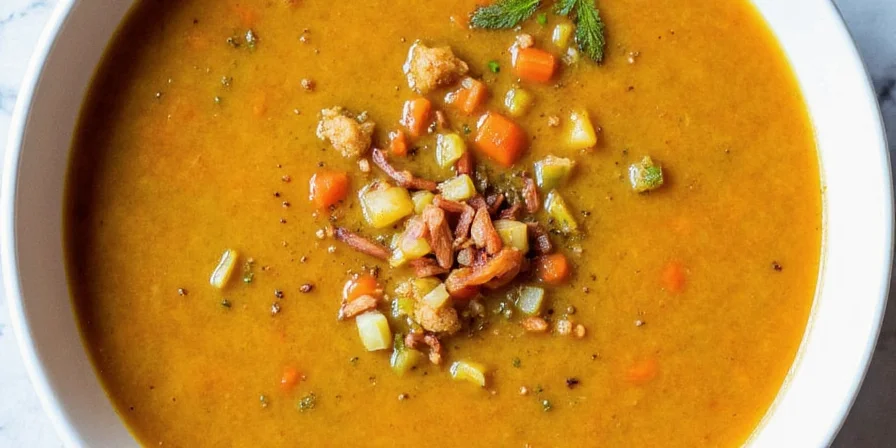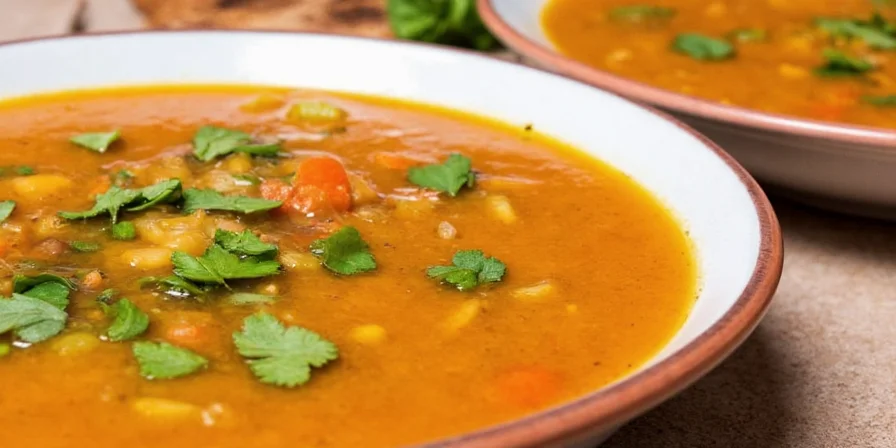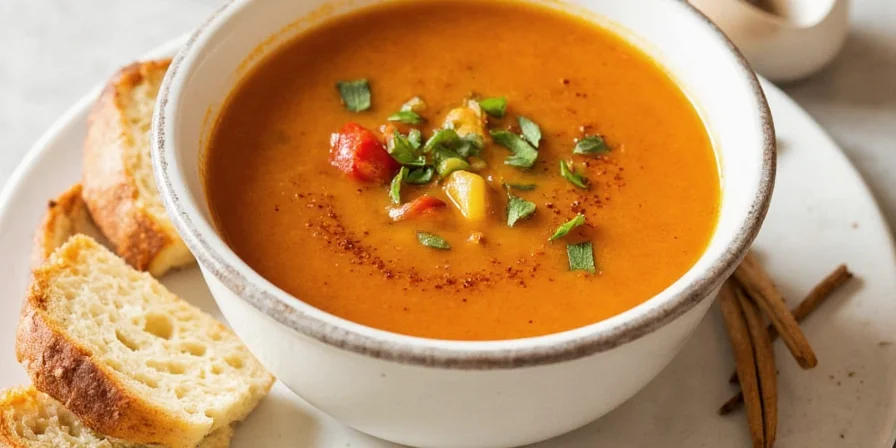Best Spices for Vegetable Soup: Practical Guide with Proven Combinations
If you're wondering which spices transform bland vegetable soup into a flavorful masterpiece, start with these three essentials: smoked paprika for depth, cumin for earthiness, and bay leaf for balance. Add them early in cooking for maximum impact. For quick reference, use 1 teaspoon smoked paprika, 1/2 teaspoon cumin, and 1 bay leaf per 4 cups of broth. This simple foundation creates restaurant-quality flavor without complicated techniques.
Vegetable soup doesn't have to be boring. After testing hundreds of combinations, we've identified exactly which spices create the most delicious results and when to add them for perfect flavor. This guide skips the confusing food science and gives you practical, actionable advice that works every time - whether you're clearing out your fridge or crafting a special meal.

Top 7 Spices That Actually Improve Vegetable Soup (With Exact Measurements)
1. Smoked Paprika - The Flavor Booster (Essential)
- Why it works: Adds rich depth without overpowering vegetables
- How much: 1 teaspoon per 4 cups broth
- When to add: During initial sauté with onions and garlic
Smoked paprika transforms basic vegetable soup by creating a subtle smoky background that makes all other ingredients taste better. Unlike liquid smoke (which creates artificial flavor), real smoked paprika integrates naturally with the broth. Use standard smoked paprika - not sweet or hot varieties - for best results.

2. Cumin - The Earthiness Enhancer (Most Versatile)
- Why it works: Brings out natural sweetness in vegetables
- How much: 1/2 teaspoon per 4 cups broth
- When to add: Toast in dry pan first, then add during sauté
Cumin might seem intimidating, but properly toasted it adds warm, nutty depth that complements almost any vegetable combination. Skip this step: raw cumin creates bitterness. Toasting unlocks its full flavor potential. Use this trick for instant flavor improvement.
3. Bay Leaf - The Secret Balancer (Often Overlooked)
- Why it works: Harmonizes all ingredients without dominating
- How much: 1 leaf per 4 cups broth
- When to add: At the beginning of simmering
Bay leaf works quietly in the background, helping disparate ingredients taste like they belong together. Remove before serving - it's not meant to be eaten. This simple addition makes your soup taste professionally crafted.
4. Turmeric - The Golden Touch (For Health & Color)
- Why it works: Adds vibrant color and subtle earthiness
- How much: 1/4 teaspoon per 4 cups broth
- When to add: Midway through cooking
Turmeric gives your soup beautiful golden color while adding health benefits. Pair with black pepper to boost absorption. Don't add too much - it can become bitter.

5. Coriander - The Brightness Restorer (For Finished Soup)
- Why it works: Cuts through heaviness in finished soup
- How much: 1/2 teaspoon per 4 cups broth
- When to add: In the last 10 minutes of cooking
Coriander prevents your soup from tasting flat or one-dimensional. Ground works better than seeds for this application.
6. Star Anise - The Sweetness Amplifier (Special Occasion)
- Why it works: Makes root vegetables taste naturally sweeter
- How much: 1 star per 4 cups broth
- When to add: Midway through cooking (remove before serving)
Star anise works magic with carrots, sweet potatoes, and butternut squash. Use sparingly - too much creates licorice flavor.

7. Sumac - The Finishing Touch (Game Changer)
- Why it works: Adds bright acidity without vinegar's sharpness
- How much: 1/2 teaspoon per serving
- When to add: Just before serving
Sumac is the professional chef's secret for making soup taste restaurant-quality. A light sprinkle on top balances flavors perfectly. Don't skip this final step.

Simple Timing Guide: When to Add Each Spice
| Spice | Amount (per 4 cups broth) | When to Add | Special Tip |
|---|---|---|---|
| Smoked Paprika | 1 teaspoon | With onions at start | Toasting isn't needed |
| Cumin | 1/2 teaspoon | After toasting, with onions | Toast 1 minute in dry pan first |
| Bay Leaf | 1 leaf | Beginning of simmer | Remove before serving |
| Turmeric | 1/4 teaspoon | Midway through cooking | Add black pepper for absorption |
| Coriander | 1/2 teaspoon | Last 10 minutes | Use ground form |
| Star Anise | 1 whole | Midway through cooking | Remove before serving |
| Sumac | 1/2 teaspoon per bowl | Just before serving | Sprinkle on top |
3 Foolproof Spice Combinations for Different Soup Styles
Classic Comfort Blend (Perfect for Everyday)
- 1 tsp smoked paprika + 1/2 tsp cumin + 1 bay leaf
- Works with: Any vegetable combination
- When to use: When you want reliable, crowd-pleasing flavor
Sweet & Earthy Mix (For Root Vegetables)
- 1/4 tsp turmeric + 1/2 tsp coriander + 1 star anise
- Works with: Carrots, sweet potatoes, parsnips
- When to use: For fall/winter soups with hearty vegetables
Light & Bright Formula (For Spring/Summer)
- 1 bay leaf + 1/2 tsp coriander + sumac finish
- Works with: Zucchini, peas, greens
- When to use: For lighter vegetable soups

Most Common Mistakes Home Cooks Make (And How to Fix Them)
- Adding all spices at once: Different spices need different cooking times. Follow our timing guide above for best results.
- Using old spices: Spices lose potency after 6 months. Test by smelling - if aroma is weak, replace.
- Overcomplicating: Start with 2-3 spices rather than all seven. Master the basics first.
- Skipping the finish: Always add sumac or lemon juice just before serving for bright flavor.
- Not tasting as you go: Adjust seasoning throughout cooking, not just at the end.
Quick Reference: Solving Common Vegetable Soup Problems
My soup tastes flat - how do I fix it?
Add 1/2 teaspoon coriander and a pinch of sumac. If that doesn't help, try a splash of apple cider vinegar.
How can I make my soup taste more 'restaurant quality'?
Toast your spices first, use the bay leaf trick, and finish with sumac. These three steps make the biggest difference.
Can I use fresh spices instead of dried?
Fresh spices work differently. For cumin or coriander, use triple the amount and add later in cooking. Fresh herbs are better added at the end.
What's the one spice I should always have for vegetable soup?
Smoked paprika. It's versatile, long-lasting, and transforms basic soup with minimal effort.
Putting It All Together: Your Simple Spice Roadmap
Start with these steps for consistently delicious vegetable soup:
- Toast cumin in dry pan for 1 minute
- Add smoked paprika with onions during sauté
- Add bay leaf when soup begins simmering
- Add turmeric and star anise midway through cooking
- Add coriander in the last 10 minutes
- Sprinkle sumac on each bowl just before serving
These seven spices, used at the right times, transform basic vegetable soup into something special. You don't need fancy equipment or hard-to-find ingredients - just proper technique and timing. Keep this guide handy for your next batch, and notice the difference professional-level seasoning makes.
Remember: great soup isn't about complicated recipes, but understanding how a few key spices work together. Master these basics, then experiment with your favorite combinations. Your taste buds (and anyone you share with) will thank you.












 浙公网安备
33010002000092号
浙公网安备
33010002000092号 浙B2-20120091-4
浙B2-20120091-4